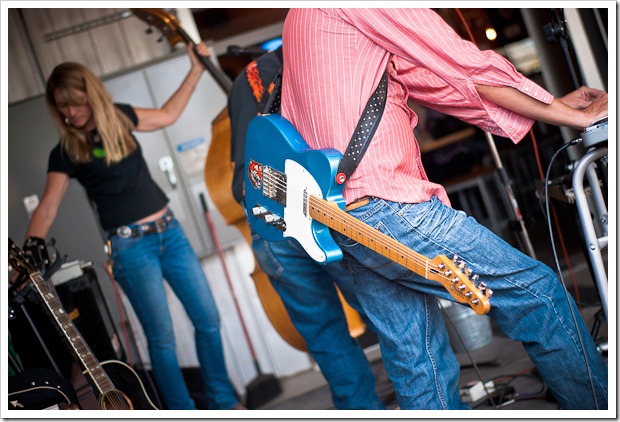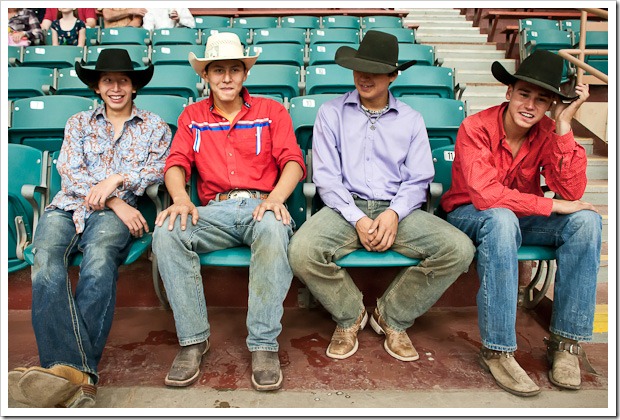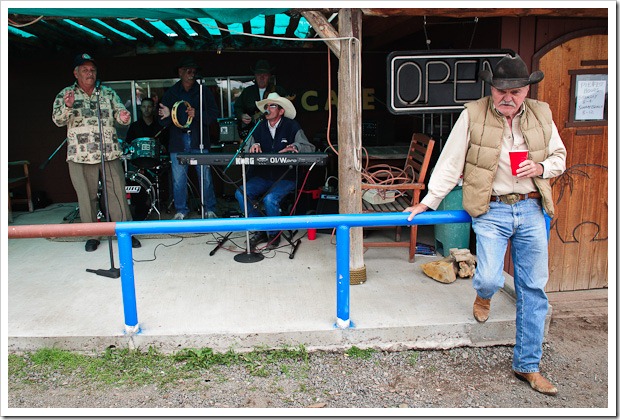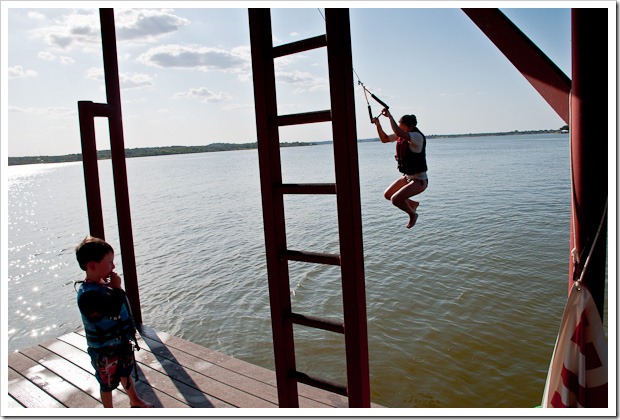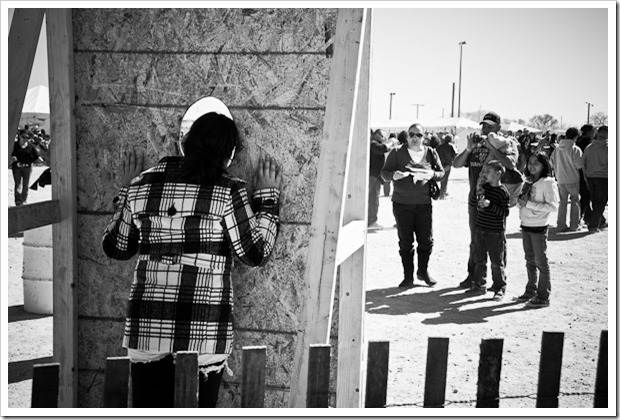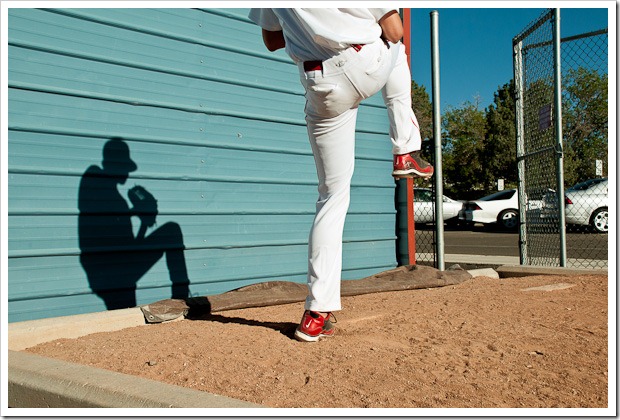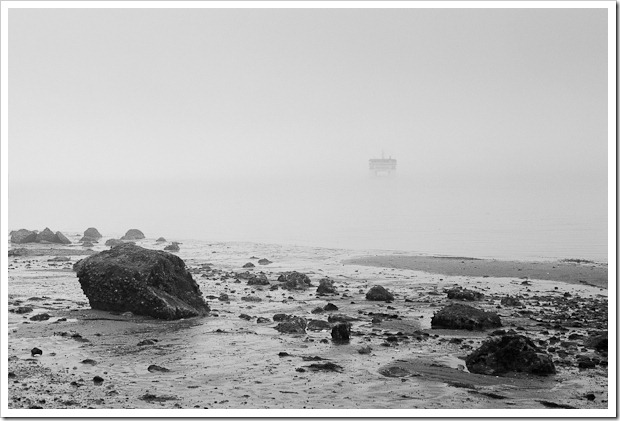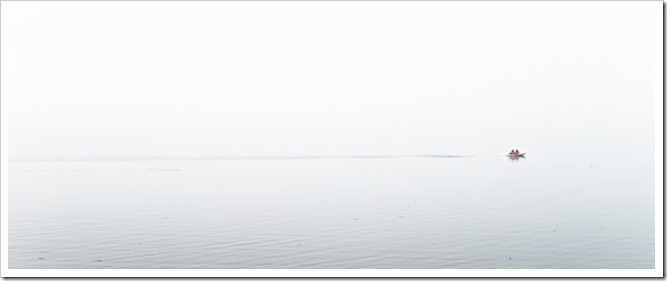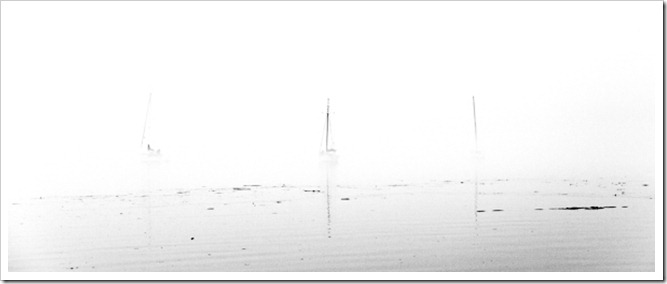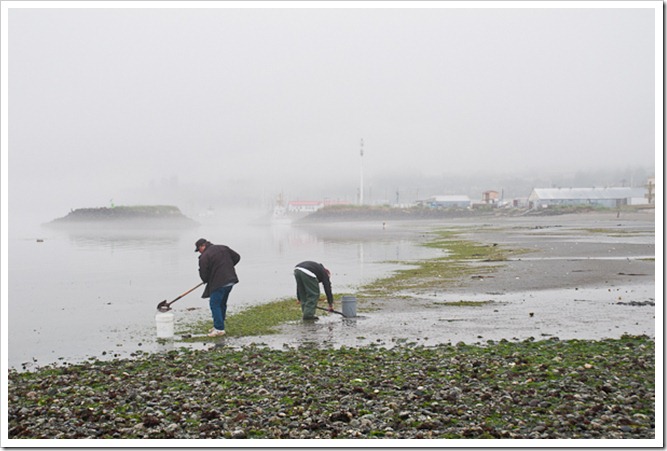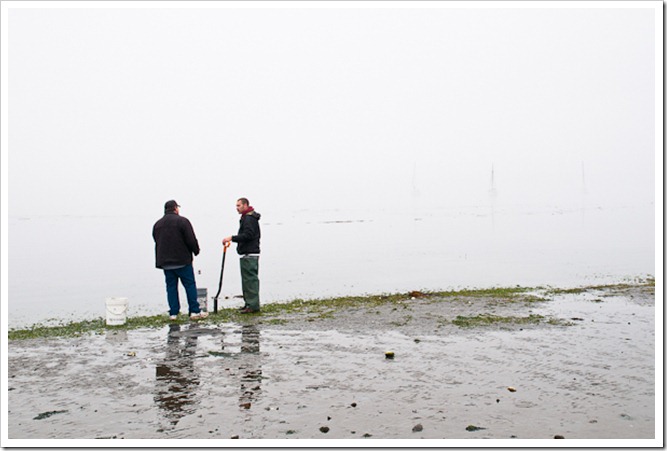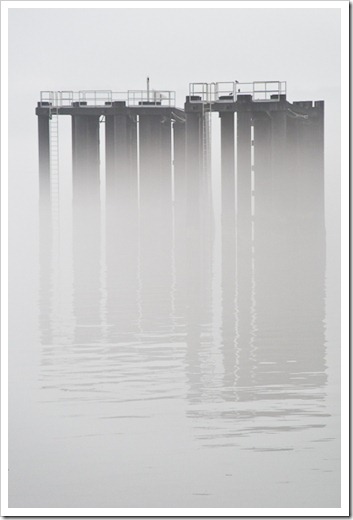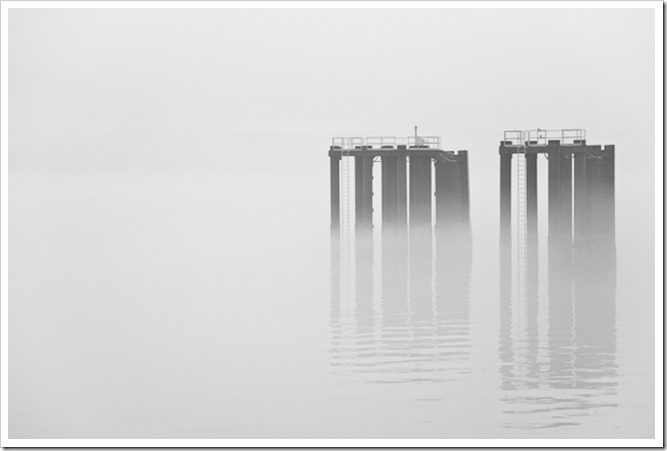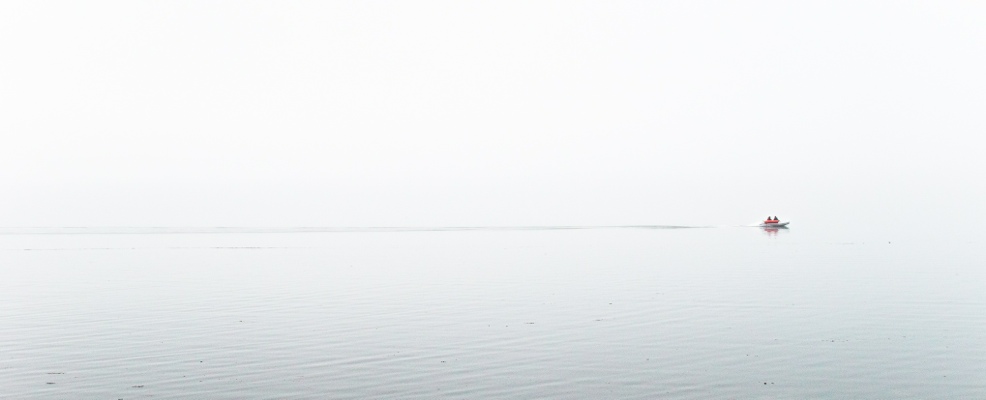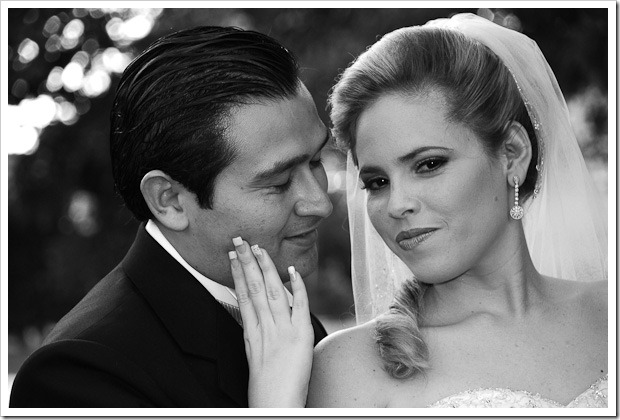Sketches: Cow Young Men
Sketches: Leaner
I went to Pie Town, New Mexico this past weekend along with Dan Milnor from Smogranch, Charlene Winfred from Perth, Australia, and Flemming Bo Jensen from Denmark for the Pie Festival. The town is a stone’s throw from my late father-in-laws ranch and I’d been there many times before, to have pie and to have lunch. This time the annual Pie Town Festival was going on complete with pie eating contest, pie queen, horseshoe competition and all sorts of good family fun.
I also briefly met Arthur Drooker through Dan, who has been remaking the Farm Security Administration portfolio that Russell Lee made back in the depression. He calls it Pie Town Revisited. Really cool stuff. If you happen to be driving through Pie Town (!) the photographs are on display in the Pie-O-Neer cafe on the north side of the road. Worth a visit.
Personally, I prefer the Good Pie Cafe on the south side of the road where I found the fellows in the picture. I especially like their chocolate pie. My son likes the milkshakes.
Sketches: Dynamism
Sketches: Say Cheese
Sketches: Autograph
Sketches: Pitch
“There was fog!”: images from Port Townsend, Washington
If you read my previous blog post you’ll be aware that I am spending some time thinking about the conversations about art and photography while there. I am also giving time for my thoughts to incubate. I think I know where things are heading for me photographically (at least generally), but part of the fun of this journey are the individual adventures along the way.
I find it great fun to make images. Often I find myself giggling as I press the shutter release button. I had that experience while I Port Townsend, which was fortuitous because there was not much time for photographing.
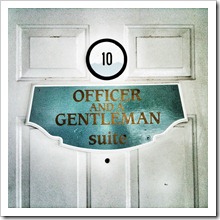 I chose to take a hotel room off-site from the location for the Artist’s Round Table. While mostly for financial reasons, it is quite in my character to recuse myself for some time each day and so I chuckled to myself as I hiked the mile back to my room at the Tides Inn, location of the “Officer and a Gentleman” movie featuring Richard Gere and Debra Winger. After about 5 hours of sleep each night I loaded my backpack with my notebooks, layered clothes, rain gear, cameras, etc. and retraced my steps in the morning.
I chose to take a hotel room off-site from the location for the Artist’s Round Table. While mostly for financial reasons, it is quite in my character to recuse myself for some time each day and so I chuckled to myself as I hiked the mile back to my room at the Tides Inn, location of the “Officer and a Gentleman” movie featuring Richard Gere and Debra Winger. After about 5 hours of sleep each night I loaded my backpack with my notebooks, layered clothes, rain gear, cameras, etc. and retraced my steps in the morning.
On one particular morning, I took a detour.
As I stepped out of my room and casually turned my head to the right to take in the water lapping at the shore just 15 feet from my door I spotted the rocky beach, the water, and….. fog!
Fog!!
Now, you have to understand something. I live in the desert. And not just a desert; I live in a high desert. My home sits at a mile elevation. From the front window of my house I can gaze at the 10,700 foot peak of the Sandia Mountains that border the eastern edge of the city. We can hike to the peak of that mountain and view 100 miles in any direction and see….brown! It is dry here. Very dry! So dry we don’t used refrigerated air conditioning in the summer. We use water based evaporative cooling. It is amazing what forced humidified air can do for a house in such a dry climate!
I love it here, but we don’t, ever, get…..fog. No moisture in the air means no fog. Period. No arguments.
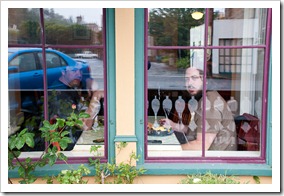 And so, I was standing on the front stoop of my hotel room and I had a conundrum. In front of me was beautiful, monochromatic, maritime, misty moisture. To my left and 3/4 of a mile away two fellow workshop participants were expecting me for breakfast. I didn’t have their phone numbers. I was going to be late.
And so, I was standing on the front stoop of my hotel room and I had a conundrum. In front of me was beautiful, monochromatic, maritime, misty moisture. To my left and 3/4 of a mile away two fellow workshop participants were expecting me for breakfast. I didn’t have their phone numbers. I was going to be late.
The following images were made that morning as I stepped down onto the rocky beach in the fog and the misty rain and let myself be guided away from a hot cup of excellent coffee, a yummy skillet breakfast, and really good company toward moisture, clam diggers, and a wonderfully beautiful morning.
When I arrived at the workshop, late, that morning I felt badly I had kept others waiting and put the discussion behind schedule. It wasn’t really quite fair. But, as I explained to the participants, “there was fog!”
I’m not quite sure they fully understood. ![]()
By the way, for those of you into photography gear, one of the images above was made with a Leica M3 (graciously on loan to me by Artist Round Table leader, Ray Ketcham) and Kodak CN400 Black and White film. Can you tell which one?
Into The Fog: Thoughts From the Artist Round Table #ART2012
At the end of last month, June, I travelled from dry, hot, dusty, and sunny New Mexico to the moist an green land of the Olympic Peninsula north of Seattle, Washington to join a select group of photographers around a table to talk. We were there to explore the place that art – and photography in particular – has in our lives. I was also there to hydrate.
I’ve allowed myself some time to let this meeting and the ensuing conversations, relationships, and new awarenesses sink in to my psyche. I may not be yet giving my experience enough time to percolate, but I feel some need to reflect on my experience in an effort to make some sense of it all. More may come – more will come, I’m sure – for this is the kind of conversational exploration that alters artist’s direction and by its very nature challenges me to look at what I am doing photographically and artistically in a much deeper way. Story of my life, I am told.
The focus of the conversation was “Raising Your Voice”. As I understand it, the conversation was to focus on how, once our artistic vision is identified (as best we can), do we say what we have to say in the best possible way? We had many conversations discussing the difference between vision and voice, we examined others’ submissions of images, we had our own images examined and commented on, we undertook a photographic exercise (just one!) exploring our vision, we ate, drank, joked, laughed, asked questions, challenged beliefs, even argued at times. We also were visited by professional artists who shared their thoughts, reviewed our images, shared their stories, and encouraged us to go into the fog.
That is the narrative of what happened. If you were to choose to attend one of these in the future, I could safely say you would experience these activities as well. But what might actually happen inside of you will be something altogether different and I cannot describe that. I can only attempt to impart to you a bit of what I have discovered, what I have been challenged with, through this process.
I’ll tell you the sequence of events that have brought me to this reflection point so you can have a context for understanding the crossroad at which I now stand.
The first occurred as I was selecting 10-12 images for submission and review at ART. We were asked to provide images that depicted our vision as we currently knew it. Well, I couldn’t say I had a photographic vision. I knew what I was interested in, but a photographic vision? Well, to be honest, I wasn’t sure I wanted one. That just sounded all too serious for something serving me as a hobby. But I forged on and was surprised to discover a theme to my body of work, especially to those images that stood out for me. So, in doing the submission, in the act of reviewing my body of work so far, I discovered I was photographing something! Who knew?
The second occurred during a visit to the round table by author and poet Kathryn Hunt. She shared with us her journey through the world of images as well as words and when she mentioned the realm the artist inhabits as the artist explores, questions, and attempts to make meaning or, failing that, some understanding. “An artist stands at the edge of the darkness and peers into its depth”, I think I remember her saying. I can’t be sure, but that is what stuck with me. When we do what is true to us as artists it is as if we stand naked in front of the mirror and look at ourselves without the benefit of our usual defenses. I know this feeling. It arises for many of my clients in my psychotherapy practice; it arises for me as I counsel them. I hadn’t thought it would arise for me in this way in photography. Well, here it is.
The third began simply enough. “Have checked out David Allan Harvey’s books yet?” someone asked me. I had looked at his latest, but not the other book available: “Divided Soul”. Frankly, I didn’t have that much interest in it. Up to that point Harvey’s photographs had been difficult for me to understand. I just didn’t “get” him. But I gave it a go. Have you ever been completely absorbed in a book where the rest of the world disappears, or you wished it did? Well that is the vortex into which I was sucked. Harvey’s book spoke straight to my (pardon the cliché) soul. I think it was how open I was to influence at the moment, or maybe it was the way in which I was being introspective, but I got what the book was about and went in deep. Then someone slid me Larry Towell’s “The Mennonites”. Same effect.
It was then I think I got it.
I am a firm believer of the unconscious mind. Carl Jung, the notable Psychiatrist and former student of Sigmund Freud, often explored and spoke of the unconscious mind as well as the collective unconscious. I am not the least surprised when aspects of my personality and my upbringing make their way, without any conscious effort from me, into my images. The challenge arises when one is made aware of these themes, these influences, these metaphors. It is not just a question of what we make of them but rather “what do we do now?!?” As we look deeply into the core of who we are, of what matters to us deeply, we are naturally challenged to live with some integrity with that core world view, with that core belief. Or not.
But we now choose knowingly, like Neo choosing to take the pill in the Matrix, there is no going back. We look down the rabbit hole and we either jump in or we do not. But we know either way.
So currently I peer into the fog, into the darkness. I am somewhat aware of what awaits me there. It is the stuff lives are made of; it is the stuff art is made of.
This is the precipice that the Artist Round Table can bring you to. Are you ready to make the art that is truly yours to make? Are you ready to dedicate yourself to something that is so true that many might not be able or willing to join you in? Are you willing to discard all measure of notoriety to make something that is so true to your experience?
That is a tough question. That deserves some thought, some consideration.
And that is where I now stand. Do I want to keep making some pretty images, some cool photos, or do I want to explore something deeper, more meaningful, more true to me?
So I hope that you forgive me as I pause to determine if craft is more important to me than a vision that might transcend photography for this photographer.
More to come, of this I am certain. Ray Ketcham, the Artist Round Table leader, promised me some sleepless nights; I owe him one!
Why Make Photographs?
I went to a lecture a few weeks ago at the Art Therapy Department at my Alma Mater that made me chuckle, gave voice to something I’ve been contemplating for a while, and made me think.
I chuckled at the beginning of this lecture because the speaker, Judy Weiser, Ph.D., LPAT, (a psychologist and licensed art therapist) asked the attendees which among them made photos? Everyone raised their hand. She then asked who kept their pictures? Everyone raised their hand once more. Then she asked, “why?”
Silence.
I chuckled.
I get it. That is a difficult question to answer, even for trained therapists highly skilled in introspection. We have difficulty answering that question. It’s a personal question. It is also a universal question. Why do we take pictures? Why do we keep them?
Each of us knows why. We just have difficulty articulating it. It is just that the “why?” is beyond words, and words don’t do much justice to the answer. It is a feeling state that can only be pointed to, suggested, or implied with words. And even then, if using words, we depend on the other – our audience – to have experienced something similar in order to understand, to empathize. Some folks have a gift with words that way and can touch a place within us we didn’t know we had. Gifted photographers do the same with a different medium. But those moments and memories that touch the deepest parts of ourselves are usually created by ourselves – or someone emotionally near to us – and so they arrive in the world, and stay in the world, full of deep, wordless, meaning.
The photographs that illuminate these memories touch us emotionally; they help us remember; they are a crystalized representational moment of the stream of time we experience as life; they help give shape and form to those people, pets, things, events, experiences that might no longer exist (and that we know at some deep unconscious level – at the very least – will cease to exist one day); they keep memories alive; they help provided meaning; they express our inner world of feelings and context; and they are beautiful; and they are ours; and they matter.
Why do you take pictures? Why do you keep them? Who sees them? Who does not see them? What do they mean to you? How do you relate to them? Which pictures make you the happiest? Which did you not care for in the moment but, years later, were you ever so grateful were made? Which pictures do you wish had not been taken? Which are you proud of? Which would you not part with for anything? Which anger you, hurt you, haunt you? Which bring unimaginable joy?
I started photographing in earnest only about 5 or 6 years ago in response to an inner urge to examine the unconscious material that emerges in my images. I also started because it made me happy and I needed some of that feeling at the time. I continue because I choose to not put down something that makes me happy. It turns out I was doing photography as therapy; who knew?
Ms. Weiser mentioned during her presentation that, “…if something inside is going to out, it will out! And if it can’t out through words it will out through photos and art.” (As an aside, part of one psychological theory is that if something wants to out and doesn’t have a generative way to do so, it will do so in degenerative ways, through addictions, compulsions, self injurious behavior, etc.)
Well ok, then. It will out. Best to give it a medium to out, no?
During the past 10 years, and especially the past 5, there has been an absolute boom of photography. Many lament this democratization of the craft. They call it the dumbing down of the art, that so many ships on the waters have resulted in lowering the water level. Hogwash. Sure, the economic opportunities for professional photographers has changed. But this is not what this paradigm shift is all about: it is about people claiming a voice for their experience that does not require words, or cannot be said in words. To my mind, since words are merely representational – they simply point to an idea, they are not the idea itself – giving a visual voice to millions of people is a good thing for those people. It matters. Photos matter.

